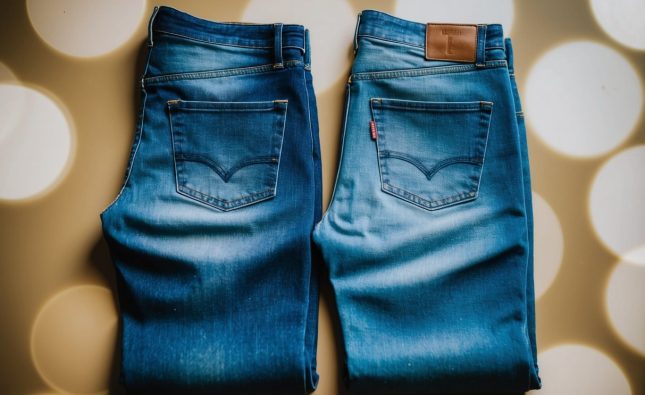
When summer heat settles in, choosing the right fabric for shirts becomes essential. Linen and cotton both offer breathability and comfort, but they cater to different preferences and needs. Linen shirts generally excel in hot, humid conditions due to their superior moisture-wicking properties and lightness, making them an excellent choice for sweltering summer days.

Cotton shirts, while versatile and widely appreciated for their softness, tend to retain more heat than linen. They provide durability and structure, ideal for casual outings or dressier occasions. For those who prioritize a laid-back and relaxed style, cotton remains a solid option.
Ultimately, the choice between linen and cotton shirts hinges on individual comfort and lifestyle preferences. By examining the strengths and weaknesses of each fabric, anyone can make an informed decision for their summer wardrobe.
Fabric Characteristics
When comparing linen and cotton shirts for summer wear, several key fabric characteristics play a significant role. These include breathability, durability, maintenance, and environmental impact, each influencing choice depending on personal preference and lifestyle.
Breathability and Comfort
Linen is renowned for its exceptional breathability. Its natural fibers allow air to circulate, helping to keep the body cool in hot weather. Linen also absorbs moisture well, wicking sweat away from the skin, which enhances comfort during humid days.
Cotton, while also breathable, generally offers less airflow compared to linen. It absorbs moisture effectively but can feel heavier when wet. Lightweight cotton variants, such as poplin, can provide comfort but may lack the cooling properties of linen.
Durability and Maintenance
Linen is a strong, durable fabric that can withstand the rigors of summer wear. It tends to strengthen with each wash, contributing to its longevity. However, linen wrinkles more easily, which may require regular ironing to maintain a polished appearance.
Cotton is also durable but may wear out more quickly in high-use situations. Depending on the weave, some cotton shirts may fade or fray over time. Maintenance is straightforward, with many cotton options being machine washable and less prone to wrinkling compared to linen.
Environmental Impact
Linen typically has a smaller environmental footprint than cotton. It is made from flax plants, which require fewer pesticides and water to grow. The production process is relatively low-impact, making linen a more sustainable choice.
On the other hand, cotton production can be resource-intensive. It often relies on significant water usage and pesticide applications. Organic cotton offers an eco-friendlier alternative, yet conventional cotton still poses sustainability concerns.
Styling and Versatility
When choosing a shirt for summer, both linen and cotton offer distinct styling options and versatility. Understanding their design features and adaptability can guide one’s decision for various occasions.
Design and Aesthetics
Linen shirts have a unique texture that conveys a relaxed, breezy aesthetic. The natural fibers give linen a slightly crumpled look, which adds character and aligns well with casual summer vibes. Colors are often muted or pastel, enhancing their light appearance.
In contrast, cotton shirts are typically smoother and come in a broader range of patterns. They can be found in everything from classic solid colors to vibrant prints, making them suitable for both casual and semi-formal settings. Lightweight cotton blends also enhance breathability while maintaining a polished look.
Adaptability to Various Occasions
Linen shirts excel in informal settings, such as beach outings or picnics, due to their relaxed nature. They pair well with shorts, sandals, and other summer staples.
Cotton shirts, with their range of designs, can easily transition from casual to formal occasions. A crisp cotton dress shirt is appropriate for an outdoor wedding or a summer business meeting. Pairing it with tailored pants or chinos elevates the look for more polished events.
Both options provide versatility, allowing individuals to curate their summer wardrobe to suit different activities and environments.
Climate Suitability

Choosing the right material for summer shirts greatly impacts comfort. Both linen and cotton have unique properties that affect how they perform in warm weather.
Heat Retention and Wicking Abilities
Linen is known for its excellent heat retention and wicking abilities. It allows air to circulate, preventing overheating. The fabric reflects sunlight and absorbs moisture efficiently.
Cotton, while soft and breathable, tends to retain more heat than linen. It can absorb sweat but may not dry as quickly. This can lead to discomfort during high humidity.
In hot climates, linen’s lightweight nature makes it preferable. Its quick-drying qualities help maintain comfort throughout the day. Cotton may work better in milder conditions.
Moisture Absorption
Linen excels in moisture absorption, drawing sweat away from the skin. This feature reduces cling and promotes a cooler feeling. Additionally, linen can absorb up to 20% of its weight in moisture without feeling damp.
Cotton also absorbs moisture but can become heavy when wet. The fabric typically retains a damp sensation longer than linen. In humid environments, this can be a drawback.
For individuals prone to sweating, linen shirts provide superior comfort. The ability to wick moisture effectively keeps the wearer feeling dry. Cotton may be suitable for less intense heat but lacks the same quick-drying properties.












